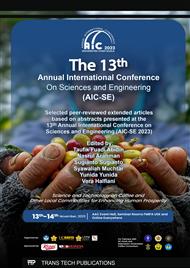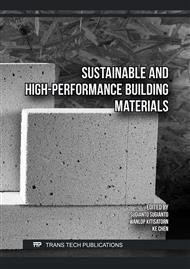p.35
p.45
p.53
p.65
p.77
p.85
p.95
p.103
p.111
Use of Cement and Aggregates Substitution for Production of Hybrid Cost-Effective and Sustainable High-Strength Concretes
Abstract:
High-strength concretes made with a lot of cement and good quality aggregates added with additives and admixtures causing expensive costs. Conversely, cement manufacturing is not environment friendly due to using many natural raw materials and delivers CO2 to atmosphere triggering global warming. Moreover, aggregates availability deriving from river reduces over time, almost 60% of civil engineering infrastructures in world are made with concrete. The purpose of this research is to study effectiveness of using cement substitute materials derived from natural geopolymer pozzolanic ash and aggregates substitute derived from palm oil mill waste in high-strength reinforced concrete beams. These local materials are abundantly available in nature but have not been used, which are utilized together to produce hybrid high-strength concrete. The test investigated was shear capacity of reinforced concrete beams in anticipating earthquake-prone areas of Indonesia. Hybrid reinforced concrete beams made with 10% pozzolanic ash as cement substitution, 20% palm oil blast furnace slag as fine aggregates substitution, and 40% palm oil shell chunks as coarse aggregates substitution. Dimensions of beams were 150 x 300 x 2200mm. To ensure shear failure emergence, beams were strengthened with longitudinal tensile reinforcement 4 D 18.9mm, longitudinal compression reinforcement 2 D 15.8mm, and shear reinforcement Ø 6 – 300 mm, resulting in capacity ratio of bending to shear 2.29. Results showed that hybrid high-strength reinforced concrete beam could reach 81.14% of shear capacity of plain beam without material substitutions, but compressive strength could significantly be increased by 130.54% and flexural tensile strength of 122.67% compared to plain high-strength concrete.
Info:
Periodical:
Pages:
77-84
Citation:
Online since:
December 2024
Price:
Сopyright:
© 2024 Trans Tech Publications Ltd. All Rights Reserved
Share:
Citation:



